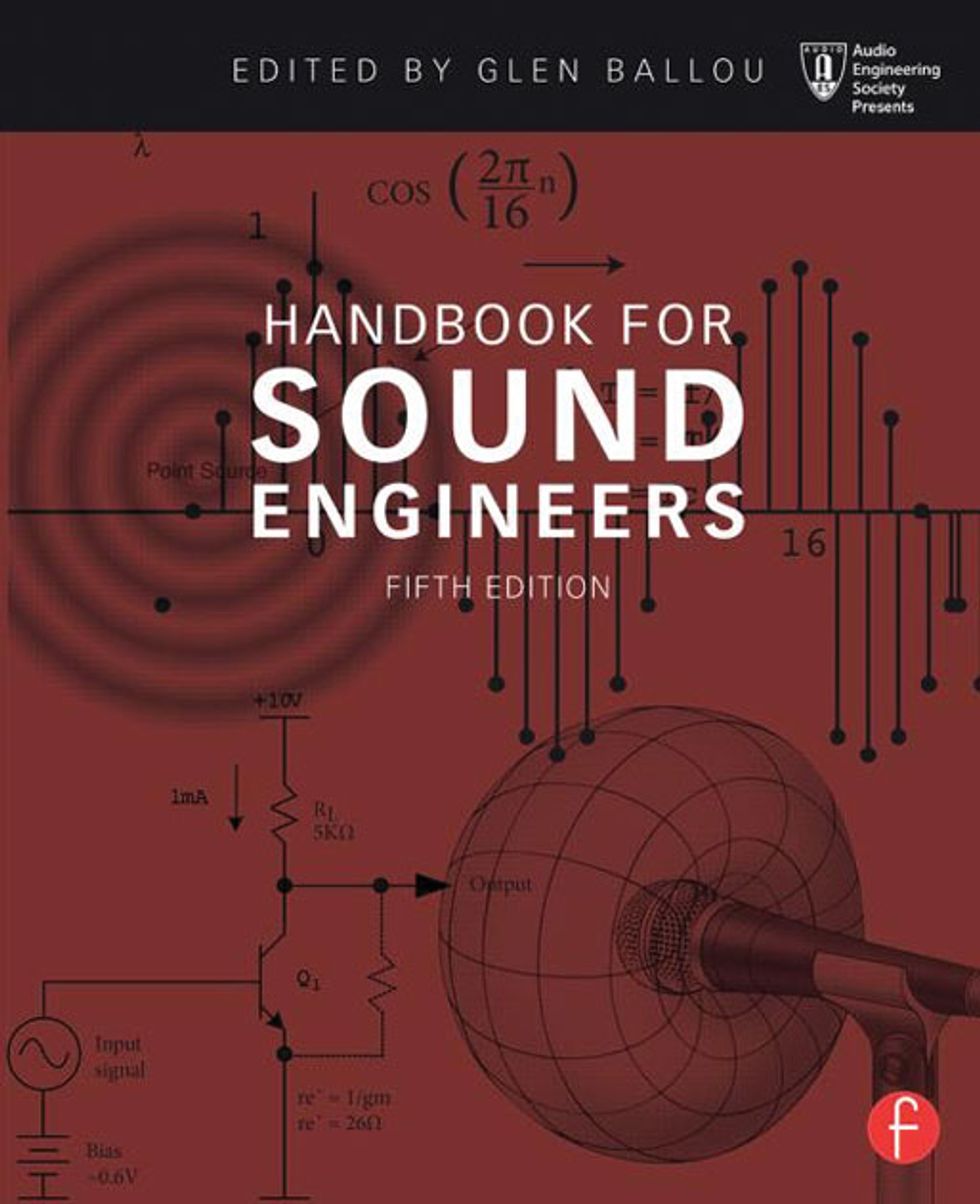Glen Ballou’s Handbook for Sound Engineers is an invaluable resource chock-full of useful information for
anyone involved in performing or recording.
In my last column [“It’s All in Your Head,” March 2015] we discussed the importance of establishing a real-life reference for what you consider a great live sound. Assuming you’ve established that reference, it’s time to look at how you can achieve the same in your own performances. Great live sound—especially with amplified acoustic instruments—doesn’t just happen. We have to learn how to control and project into the performance space. For the frequent performer, mastery of this skill is critical.
Acoustic guitarists often perform solo in small rooms where they are their own soundman running a PA. (You’d better know what you’re doing in this case!) On the flip side, you have to deal with the house soundman. This person can range from a weekend board warrior who knows practically nothing to a real pro with an attitude of “I know it all”—including how you should sound, even before they’ve heard you play a note! In either case, your ability to know exactly what you need and describe it in clear, precise terms often means the difference between an inspiring performance and a night of frustration and disappointment.
Mastery of the needed skills is a multidisciplinary exercise that takes a fair amount of time and practice, but I assure you the process can be enjoyable, and the payoff is huge. Rather than simply sharing a few tips and tricks, I’ve broken the exercise down into specific categories, with suggested reference materials that I’ve found particularly useful.
A better understanding of sound. Step one is to gain a better understanding of the nature of sound itself. For our purposes, the word “sound” refers to its meaning in two different disciplines. In the field of acoustics, sound is an audible, mechanical wave propagating through matter. In the field of psychoacoustics, sound is the perception of such waves by the brain. I suggest reading The Science of Sound by Thomas D. Rossing and F. Richard Moore. It’s a widely recognized acoustics textbook that’s not too heavy in math, but covers such topics as instrument acoustics, room acoustics, and sound perception and measurement.
Building your critical listening skills. Just because we have the gift of hearing doesn’t necessarily mean we are smart listeners. Critical listening is a learned skill that improves with practice, akin to the ear training you did when studying your instrument. Listening isn’t easily self-taught—you need a skilled mentor or an audio course to hone this skill. One program I strongly recommend is David Moulton’s eight-CD Golden Ears audio ear-training course.
The basic tools of the trade. After exploring the nature of sound itself and sharpening our ears by practicing critical listening, it’s time to gain a fundamental understanding of the design, function, and operating principals of the tools we use to amplify and shape our sounds. Many consider Glen Ballou’s Handbook for Sound Engineers the bible for sound engineers, and it gets my absolute highest recommendation. It covers such topics as acoustics, psychoacoustics, electroacoustic devices (microphones and loudspeakers), circuit design, recording and playback gear, measurements, and more. This book has seen more use over the past 30 years than any other in my professional library.
More than just knob twiddling. If you’ve seen my past few columns, you’ve read my rants about not mistaking recorded sound for live sound. Yes, they are very different worlds, but of all the people I have worked with in this business, recording engineers tend to have a better understanding of sound than most musicians, FOH guys, roadies, circuit designers, and instrument makers. Although they work in highly controlled environments, their knowledge can be invaluable in live settings. .
With the recent revolution in live mixing—where live-mixing desks are computer-based and full of plug-ins—the tools used by live and studio engineers are becoming one and the same. Even though live sound is my main thing, I found it necessary to take a deep dive into the studio world as a practical matter. If you can assimilate the knowledge these engineers are sharing, you can finally stop simply twiddling knobs and start using your personal equipment in an artistic and useful manner. Three subject-appropriate books I suggest checking out are Michael Paul Stavrou’s Mixing with Your Mind, Mike Senior’s Mixing Secrets for the Small Studio, and Bobby Owsinski’s The Mixing Engineers Handbook.
Taking it live. Once armed with your new skills, it’s time to gain a working knowledge of installed sound-reinforcement equipment and its proper use in small, large, indoor, and outdoor venues. The Sound Reinforcement Handbook by Gary Davis and Ralph Jones andScott Hunter Stark’s Live Sound Reinforcement are two helpful references. Their publication dates may suggest they’re dated, but the books cover the most important fundamentals and are as relevant today as when they were written.
Bringing it all together. By following these guidelines, you’ll learn a lot about the nature of sound, tuning your ears, and working with gear from the best in the business. It might seem like a lot of work, but if your first guitar teacher told you about all the things you’d need to learn and all the hours you’d need to practice to become a really good player, I’m sure that wouldn’t have stopped you. So dive in and make it happen!

















